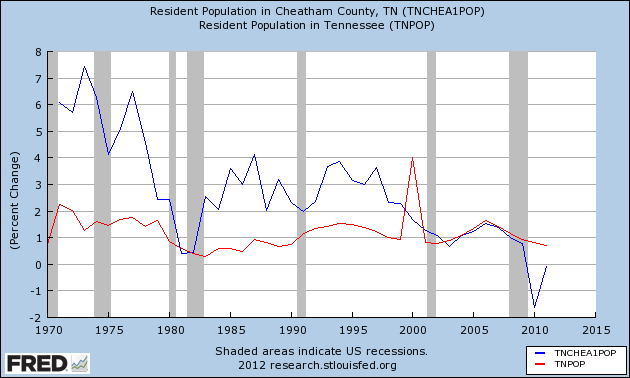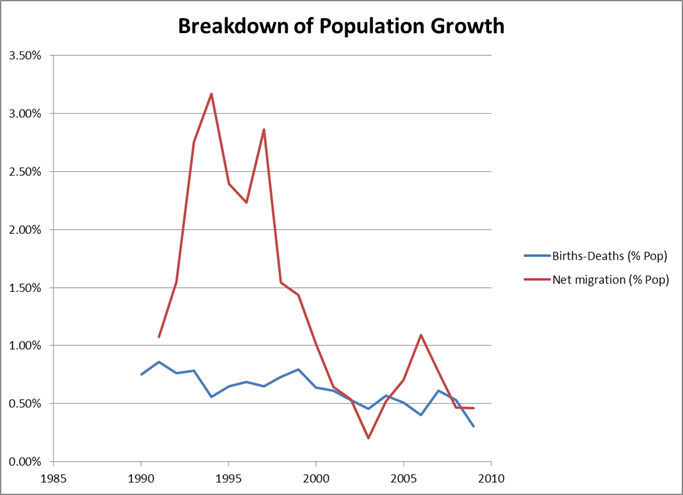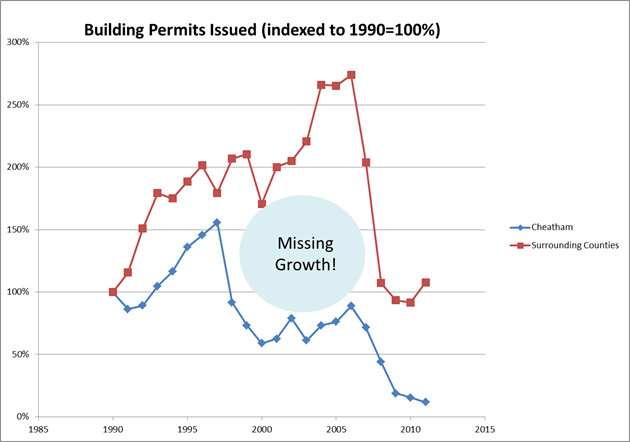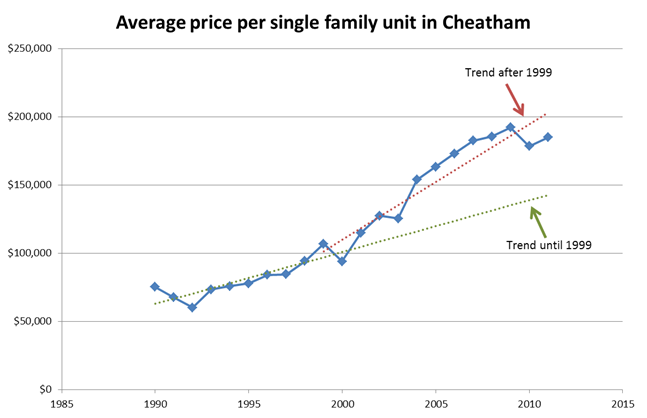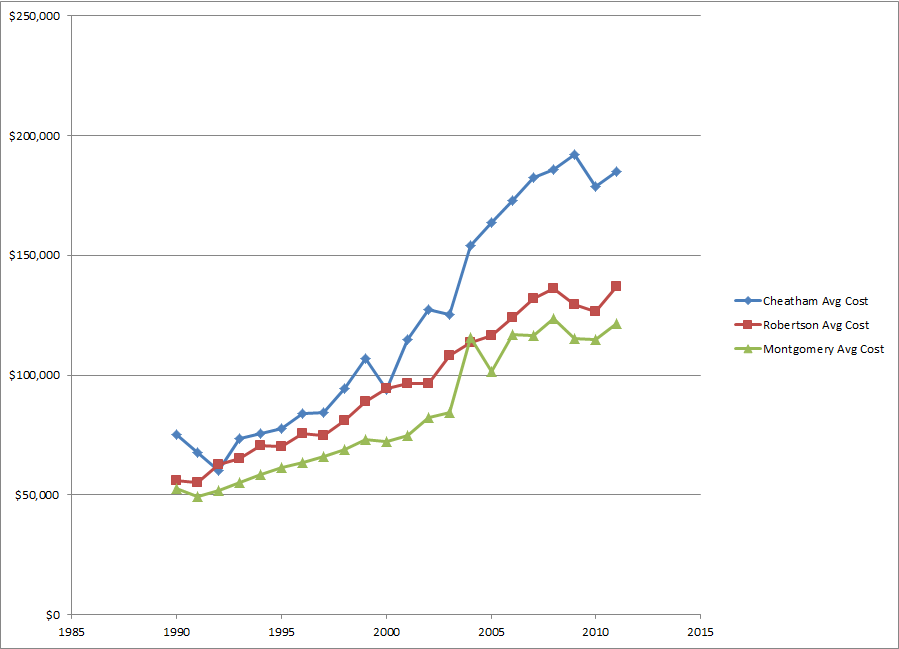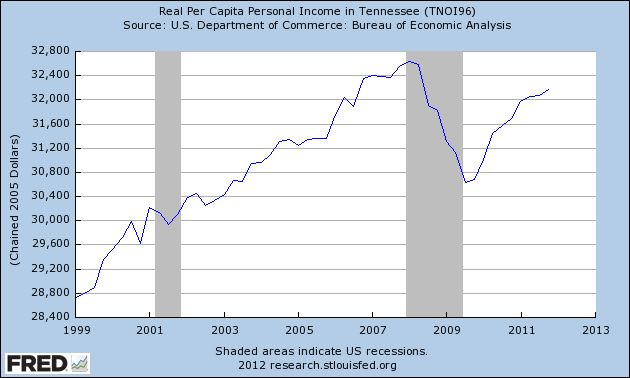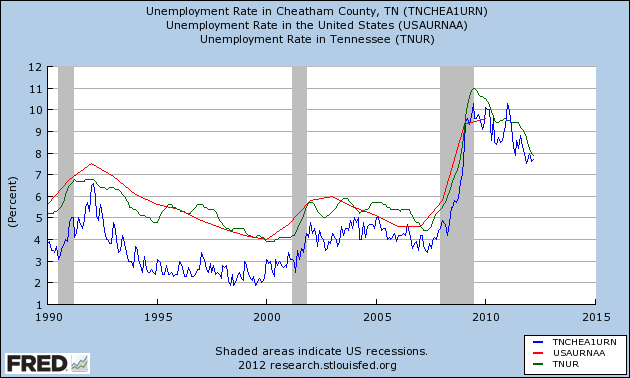A work in progress. This will be updated from time to time.
Population
Cheatham County’s population growth (in blue) has been slowing for some time, and in recent years has grown slower than the Tennessee average (in red).
UTK’s Center for Business and Economic Research has created a spreadsheet of population forecasts for the next several decades that highlights that Cheatham County is suffering from an accelerating decline in population under 40.
They predict that the county population as a whole will continue to slowly grow around 1%. However, the population under 40 (primarily young families with children) is forecast to plunge precipitously. On average the county will be growing “older”.
This trend will devour the county’s seed corn of young families in just a few years unless halted.
The formula for population growth is:
Population growth = (births – deaths) + (in-migration – out-migration)
If we look at the actual data, we can see that net migration into the county collapsed in 2000.
There were 3 seminal events in that time period (that I can recall, anyway) that might be the cause: The Dot.Com recession, the impact fee was raised from $750 to $7500, and AO Smith acquired State Industries. (If there’s another candidate event I’m overlooking, please let me know!)
If it were the Dot.Com recession, it is reasonable to assume it would have have had similar effects on other surrounding counties. However, their population growth recovered to varying degrees, while ours lagged behind, which suggests the causative factor is something intrinsic to Cheatham County.
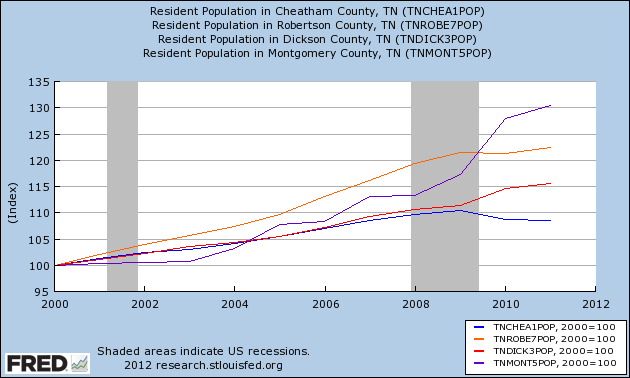
This is still a bit speculative (I need to more research to conclusively prove it), but after trawling through a ton of data, a large portion of collapse in net migration appears to be due to the impact fee. New home construction plummeted as soon as it was passed.
The impact fee caused the average home price after 1990 to to grow faster than before 1999, making buying a home a more expensive proposition and reducing the supply of affordable housing.
While the price of an average new home in Cheatham started growing faster in 2000, prices in Robertson and Montgomery counties were unaffected.
At the same time prices in Cheatham were starting to skyrocket, the average home price in Davidson actually dropped:
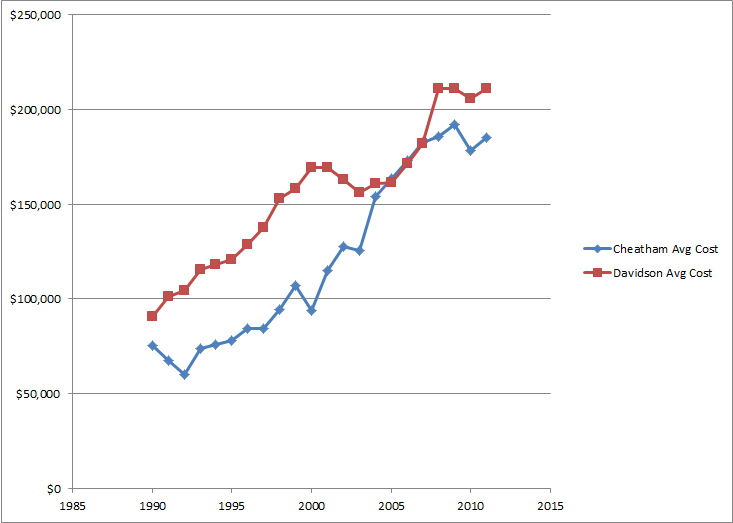 Since young families are often on a tight budget and can get more house for their dollar elsewhere, Cheatham lost out on growth to other counties, primarily Davidson.
Since young families are often on a tight budget and can get more house for their dollar elsewhere, Cheatham lost out on growth to other counties, primarily Davidson.
Income and Employment
As you’ve probably noticed, we’re in the middle of an economic depression, similar in scope to the Great Depression of the 1930’s (although so far of lesser intensity). The conditions that precipitated it are unlikely to disappear for some time. The average Tennessean’s real income has yet to catch back up to what it was in 2007, much less where it should be, and there are currently more negative economic signs than positive on the horizon.
For years, the county (in blue) had lower-than-average unemployment, both compared to the rest of Tennessee (green) and the country as a whole (red). That helped the county tremendously. In good times people in Cheatham County had more jobs, and in bad times we lost fewer jobs.
This was probably due to State Industries’s growth providing an above-average supply of jobs, as well as selling something (hot water) which you have to have irregardless of how the economy was doing. But you can see starting around 2000 the gap began to narrow, and effectively vanished when the Great Recession hit.
The local unemployment rate has caught up with the national unemployment rate since roughly 2007. My hunch is that this is due to several factors:
- AO Smith acquiring State Industries and sending growth out of the county to other plants.
- As a large national company, AOS’s revenues are more strongly tied to the state of the national economy than the local economy.
- Even beyond AOS, the trend towards globalization has diverted manufacturing jobs that would have come here to other locations.
- New businesses are often reluctant to locate where unemployment is below-average, because competition for employees reduces profits.
- Cheatham lacks fundamental infrastructure (broadband internet) needed to attract 21st century jobs like IT and healthcare. Those jobs are gravitating to Davidson/Williamson instead.
- Cheatham has been relatively unsuccessful at attracting new economic drivers. Wal-Mart and Walgreens help, but they aren’t minting too many local millionaires.

